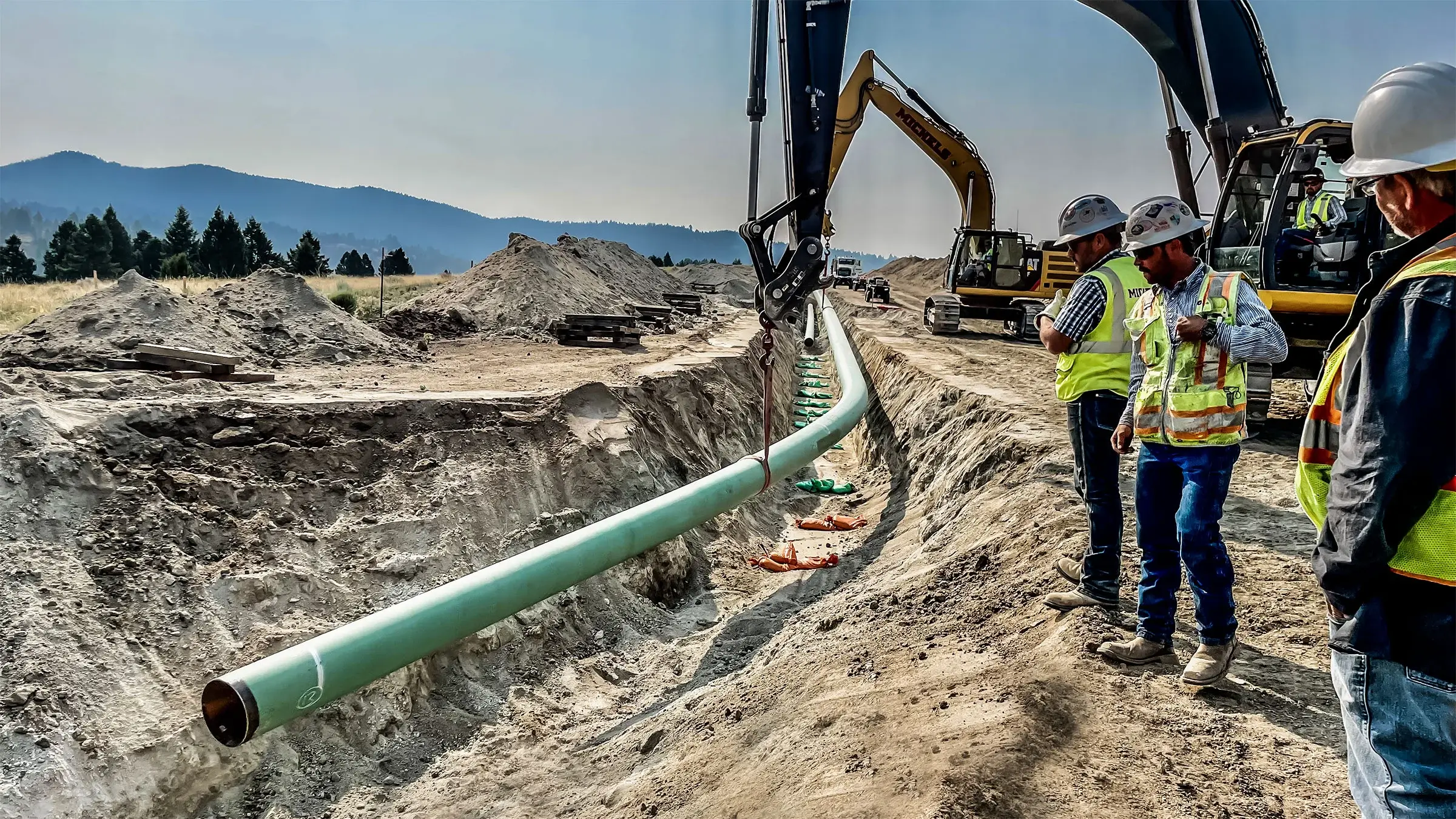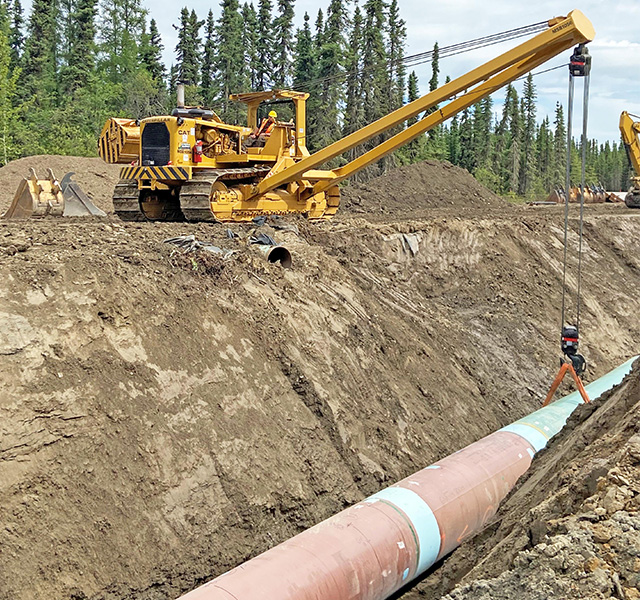How to Choose the Right Provider for Creek Pipe trenching services
Wiki Article
Understanding the Fundamentals of Pipes Installation: What You Required to Know About the Process
Appropriate pipe installation is necessary for any type of pipes system. It requires careful consideration of different factors, consisting of material selection and adherence to neighborhood guidelines. A well-planned format can stop issues like stress loss, while the right devices guarantee effective joining techniques. Nevertheless, even experienced installers can make typical blunders. Understanding these basics can result in an extra efficient and long lasting system, triggering a more detailed consider the crucial elements included in the process.Selecting the Right Products for Pipe Installation
When considering pipe installation, the selection of suitable products is necessary to making sure resilience and performance. Various products are available, each offering special benefits and factors to consider. For instance, PVC pipes are light-weight, resistant to deterioration, and cost-effective, making them excellent for household plumbing. Alternatively, copper pipes, understood for their longevity and capacity to stand up to high temperatures, are frequently preferred for home heating systems.Additionally, galvanized steel pipes provide toughness and toughness, appropriate for sturdy applications, although they are prone to rust over time.For below ground setups, polyethylene pipelines are favored as a result of their versatility and resistance to stress splitting. Proper product selection depends upon the specific demands of the project, consisting of stress scores, temperature level variations, and the chemical nature of the liquids being carried - Creek Pipe roustabout. Inevitably, informed options regarding pipe materials add significantly to the overall success and durability of pipes systemsUnderstanding Local Structure Codes and Regulations
Exactly how can recognizing local building ordinance and guidelines influence pipe installation? Knowledge with these codes is crucial for making sure that pipe installations are safe, certified, and reliable. Neighborhood building ordinance outline particular demands relating to products, installation techniques, and precaution, which need to be stuck to to avoid possible lawful concerns and pricey fines.Failure to comply can lead to evaluations being stopped working, hold-ups in job conclusion, or also mandated elimination of poorly mounted pipes. Furthermore, understanding zoning legislations and guidelines can influence the sort of products enabled, in addition to the approaches made use of for installation.Contractors and home owners alike should invest time in evaluating regional policies prior to beginning any type of installation job. This proactive approach not just advertises security but also boosts the total high quality and toughness of the plumbing system, ultimately cultivating lasting performance and contentment.Preparation Your Pipe Design and Style
Proper preparation of pipe design and design is essential for attaining an effective plumbing system. This procedure begins with assessing the specific needs of the space, thinking about the place of components and home appliances. Precise dimensions assure that pipelines are properly transmitted, lessening bends and turns that can result in push loss.Consideration of the circulation prices and the sorts of products made use of is essential, as various materials have varying resilience and compatibility with pipes systems. Additionally, the developer ought to make up future expansions or alterations to the layout, permitting flexibility in situation of renovations.Efficient drainage and ventilation are additionally significant parts of the design, as they protect against blockages and guarantee appropriate waste elimination. Finally, partnership with neighborhood building ordinance guarantees conformity and safety, which is vital in any plumbing installation job.Important Devices and Tools for Installation
Effective pipe installation rests on having the right tools and devices handy. Vital devices consist of pipe cutters for clean cuts, wrenches for tightening installations, and pliers for clutching and turning pipes. Furthermore, a degree guarantees pipes are installed uniformly, while a determining tape help in attaining specific lengths.For specific materials, a blowpipe might be needed for copper pipelines, while a PVC cutter is essential for plastic alternatives. Safety tools, such as handwear covers and safety glasses, shields installers from potential hazards throughout the process.A pipeline bender can be specifically valuable for developing smooth contours without endangering stability, while a torque wrench assurances that connections are protected to the producer's specifications.Having these tools readily offered not only helps with a smoother installation process but also adds to the total longevity and capability of the pipes system. Appropriate equipment is crucial in achieving long-lasting outcomes.Methods for Proper Pipe Signing Up With and Sealing
Attaining a safe and leak-free connection in between pipelines requires mindful focus to joining and sealing strategies. Different methods exist, each matched to different pipe products and applications (Creek Pipe trenching services). As an example, welding is typically employed for steel pipes, ensuring durable connections via warm fusion. On the other hand, plastic pipelines gain from solvent cement or combination welding, developing strong, permanent bonds.Threaded connections are typical in both steel and plastic piping, needing specific positioning Creek Pipe HDPE installation and the usage of suitable sealers, such as Teflon tape or pipe dope, to prevent leakages. Compression installations offer one more choice, where mechanical pressure protects the pipelines together, making them quickly dismantled for maintenance.Regardless of the method selected, correct preparation is necessary. This consists of cleaning pipe ends and guaranteeing they are devoid of particles. Executing these strategies diligently will improve the long life and reliability of the pipe system, inevitably contributing to its effective efficiencyTypical Blunders to Avoid During Installation
Throughout pipe installation, avoiding common errors is important for making certain a trustworthy and efficient system. One constant error is stopping working to determine and reduce pipelines precisely, which can cause inappropriate installations and leakages. In addition, neglecting to check the compatibility of materials can result in corrosion or other damage gradually. Poorly safeguarding joints and links can additionally develop weak factors in the system, causing potential failures.Another common error is ignoring the importance of incline and drainage; pipelines must be installed at the correct angle to facilitate proper circulation. Poor assistance for pipes can result in sagging and stress, influencing the honesty of the system. Eventually, neglecting regional codes and regulations can result in pricey rework and safety and security dangers. By being conscious of these mistakes, installers can significantly enhance the resilience and performance of pipe systems.Maintenance Tips for Long-lasting Pipe Solutions
To assure the durability of pipe systems, normal evaluations and cleansing are important techniques. These steps aid identify possible issues before they rise into significant troubles. Furthermore, using proper insulation methods can further safeguard pipelines from temperature variations and environmental aspects.Normal Inspections and Cleaning Up
Normal assessments and cleaning are crucial for maintaining the long life and efficiency of pipe systems. Consistently examining pipes for indications of rust, leakages, or clogs can aid identify potential problems before they intensify into pricey fixings. Cleaning pipes periodically removes buildup that can restrict flow and promote degeneration. It is a good idea to arrange assessments at the very least as soon as a year, yet a lot more frequent checks might be necessary in high-usage environments. Utilizing professional solutions for thorough cleansing warranties that all particles is successfully removed. Furthermore, keeping records of inspections and maintenance tasks help in tracking the system's health and wellness gradually - Creek Pipe trenching services. By focusing on these methods, residential property proprietors can enhance the reliability and life-span of their pipe systemsCorrect Insulation Methods
Efficient insulation techniques play an important duty in preserving the effectiveness and longevity of pipe systems. Proper insulation decreases warm loss in hot water pipelines and protects against cold in cold water pipes, significantly minimizing energy costs and potential damage. Usual materials used for insulation consist of fiberglass, foam, and rubber, each offering varying degrees of thermal resistance. It is important to assure that insulation is applied uniformly, covering all revealed areas without voids. In addition, protecting insulation with appropriate bolts helps keep its position and performance gradually. Regular examinations ought to be performed to determine deterioration, assuring timely substitutes. By executing these strategies, pipe systems can operate successfully and have a prolonged life span, ultimately profiting both the environment and the property owner.
Regularly Asked Inquiries
How Do I Figure Out the Appropriate Pipe Dimension for My Project?
Figuring out the appropriate pipe size entails reviewing the task's circulation requirements, stress specifications, and the sort of liquid being delivered. Consulting layout standards and conducting computations assurances suitable efficiency and performance in the installation procedure.What Are the Ecological Influences of Various Pipe Products?

Can I Install Pipes Myself or Should I Employ a Professional?
The inquiry of whether to mount pipes individually or work with an expert frequently depends on the individual's skill level and task intricacy. A specialist may assure compliance with laws and reduce potential long-lasting concerns.The Length Of Time Can I Expect My Pipe Installation to Last?
The longevity of pipe installation differs considerably, commonly lasting 20 to 100 years, relying on products, installation top quality, and upkeep. Routine evaluations and appropriate treatment can improve sturdiness and stop premature failings.
What Are the Signs of a Failing Pipe System?
Indications of a stopping working pipe system consist of regular leakages, uncommon water stress adjustments, stained water, mold growth, and consistent wetness. House owners should keep track of these indications to avoid pricey damages and guarantee timely repair work are made.Report this wiki page